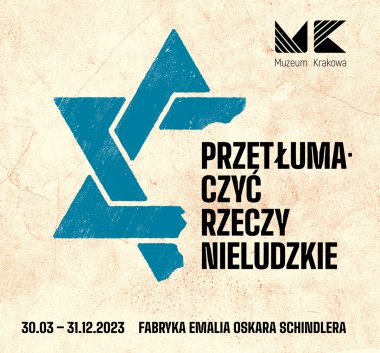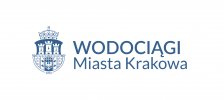Explain the inexplicable
31.03.2023
- 31.12.2023

Exhibition curator
Katarzyna Kocik
Temporary exhibition at Oskar Schindler's Enamel Factory open to the public from 31 March 2023 to 31 December 2023.
At the end of 1944, in Lublin, which had been liberated from German occupation, the Central Committee of Jews in Poland, together with the Association of Jewish Writers and Journalists, set up the Central Jewish Historical Commission (Centralna Żydowska Komisja Historyczna, CŻKH), whose main task was to collect source materials, including accounts from Holocaust witnesses, and to make the collected resources available to institutions involved in prosecuting and sentencing German war criminals. Survivors' testimonies were used to describe the experiences of Jews during the German occupation. The Commission staff assumed that lists, statistics and scientific formulations would not express what was most important in all this: "the tragic fate of individuals". The task of documenting the Holocaust was undertaken by Jewish researchers who were themselves victims of persecution. Most of them were not professional historians. Many of them lost all their relatives during the war. They were aware that they were documenting events that were "incomprehensible in their criminal and cruel nature".
One of the most active branches of CŻKH was the Provincial Jewish Historical Commission in Kraków. In 1946, it published the first study devoted to the fate of Kraków's Jews during the war. It was published to commemorate the third anniversary of the liquidation of the city's ghetto. In his introductory text, the head of the Kraków branch of the Commission, Michał Maksymilian Borwicz, repeatedly touched on the difficulties of verbalising the wartime experience of the persecuted: "we recollect your fate, aware that we are unable to express it", "it is difficult to speak about your experiences", "human speech is powerless in this case", but on the other hand, he emphasised that "it is nevertheless necessary to speak".
How did early researchers of the Holocaust talk about the wartime experience of the Jews? How did they interpret the events of that time? What were the effects of their research?
The exhibition tells the story of the attempts made by the Jewish population in the immediate post-war period to come to terms with the tragic experience of the German occupation in Kraków and addresses the issue of remembering the Jewish victims of the war in the city. The narrative of the exhibition revolves around four themes: the survival of the persecuted, the documentation, judgement of wartime events and the contemporary interpretation and explanation of the tragic past.
The exhibition is broken down into five parts. The first addresses the issue of the return of survivors to Kraków and the socio-political atmosphere in the city after its liberation from German occupation. The second part of the exhibition, Documenting, is devoted to the fate of researchers from the Provincial Jewish Historical Commission (Wojewódzka Żydowska Komisja Historyczna, WŻKH) in Kraków and its various activities. The next one, Sentencing, tells the story of the perpetrators by referring to accounts of the trials of German war criminals that took place in Kraków between 1946 and 1948, during which special attention was paid to the crimes committed against the city's Jewish population. The next section, Explaining, deals with the post-war process of explaining and interpreting the tragedy of the war in Poland.
In a specially designated exhibition space, quotes from reports of death, compiled by WŻKH in Kraków on the basis of data given to the institution at the end of 1945 by surviving Jews, are presented. They include information on the deaths of family members, friends, colleagues and fellow prisoners. The sections of the documents referred to e.g. the victims' place of birth, place of residence during the occupation, profession and circumstances of death. They describe the last moments of the lives of the loved ones.
In November 1945, Róża Nass provided the staff of WŻKH with information about the circumstances of the death of her brother, Erwin Gichner: "He died of hunger. He was barely dressed, wearing a thin striped uniform all winter, he was exhausted and knew he was dying". Frymeta Halpern's death in the Bergen-Belsen camp was reported by her son-in-law: "She was working in the kitchen and took some potatoes in her coat. The Lagerführer found them during a search and beat her up terribly, so that she suffered for a few more days and died after a week."
Among the dozens of exhibits on display are artworks and paintings by Holocaust survivors and witnesses, documents produced by WŻKH in Kraków, books published by the institution and objects found during archaeological work carried out at the site of the Belzec death camp and the Plaszow camp - the two main sites of mass murder of Kraków's Jews. These items are now in the collections of the State Museum at Majdanek and the Kraków Museum. The exhibition is enriched by numerous photographs.
We invite you to visit the exhibition and take part in the accompanying events.
One of the most active branches of CŻKH was the Provincial Jewish Historical Commission in Kraków. In 1946, it published the first study devoted to the fate of Kraków's Jews during the war. It was published to commemorate the third anniversary of the liquidation of the city's ghetto. In his introductory text, the head of the Kraków branch of the Commission, Michał Maksymilian Borwicz, repeatedly touched on the difficulties of verbalising the wartime experience of the persecuted: "we recollect your fate, aware that we are unable to express it", "it is difficult to speak about your experiences", "human speech is powerless in this case", but on the other hand, he emphasised that "it is nevertheless necessary to speak".
How did early researchers of the Holocaust talk about the wartime experience of the Jews? How did they interpret the events of that time? What were the effects of their research?
The exhibition tells the story of the attempts made by the Jewish population in the immediate post-war period to come to terms with the tragic experience of the German occupation in Kraków and addresses the issue of remembering the Jewish victims of the war in the city. The narrative of the exhibition revolves around four themes: the survival of the persecuted, the documentation, judgement of wartime events and the contemporary interpretation and explanation of the tragic past.
The exhibition is broken down into five parts. The first addresses the issue of the return of survivors to Kraków and the socio-political atmosphere in the city after its liberation from German occupation. The second part of the exhibition, Documenting, is devoted to the fate of researchers from the Provincial Jewish Historical Commission (Wojewódzka Żydowska Komisja Historyczna, WŻKH) in Kraków and its various activities. The next one, Sentencing, tells the story of the perpetrators by referring to accounts of the trials of German war criminals that took place in Kraków between 1946 and 1948, during which special attention was paid to the crimes committed against the city's Jewish population. The next section, Explaining, deals with the post-war process of explaining and interpreting the tragedy of the war in Poland.
In a specially designated exhibition space, quotes from reports of death, compiled by WŻKH in Kraków on the basis of data given to the institution at the end of 1945 by surviving Jews, are presented. They include information on the deaths of family members, friends, colleagues and fellow prisoners. The sections of the documents referred to e.g. the victims' place of birth, place of residence during the occupation, profession and circumstances of death. They describe the last moments of the lives of the loved ones.
In November 1945, Róża Nass provided the staff of WŻKH with information about the circumstances of the death of her brother, Erwin Gichner: "He died of hunger. He was barely dressed, wearing a thin striped uniform all winter, he was exhausted and knew he was dying". Frymeta Halpern's death in the Bergen-Belsen camp was reported by her son-in-law: "She was working in the kitchen and took some potatoes in her coat. The Lagerführer found them during a search and beat her up terribly, so that she suffered for a few more days and died after a week."
Among the dozens of exhibits on display are artworks and paintings by Holocaust survivors and witnesses, documents produced by WŻKH in Kraków, books published by the institution and objects found during archaeological work carried out at the site of the Belzec death camp and the Plaszow camp - the two main sites of mass murder of Kraków's Jews. These items are now in the collections of the State Museum at Majdanek and the Kraków Museum. The exhibition is enriched by numerous photographs.
We invite you to visit the exhibition and take part in the accompanying events.

Exhibition curator
Katarzyna Kocik


